Complex, bright and deep red coloralways stands out. What can it be combined with to get the effect you need? How to balance it with other colors? How to create a rich, interesting and modern composition based on the most striking color of the palette? We study possible schemes using real examples The nature of red is such that it is impossible not to notice it. It attracts our attention, no matter what we complement it with. Therefore, the first step in working with the red palette should begin with determining the "dosage". The universal rule of a novice colorist is to strive for a proportion of 60-30-10, where 60% is the main color, 30% is the auxiliary and 10% goes to the accents. Of all the possible ways to fill space with color, this is the simplest and almost win-win, something like the "golden section".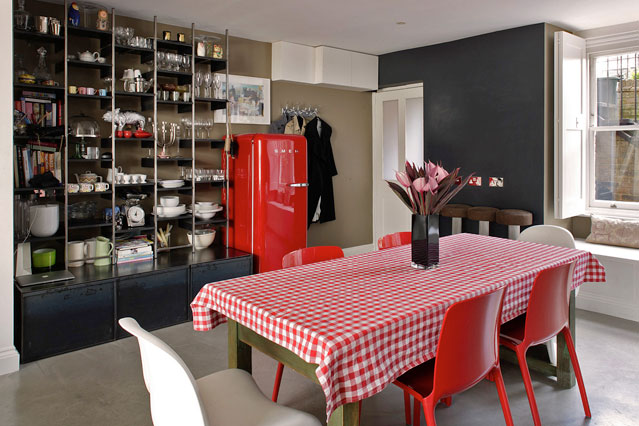


 Our opinion:— In practice, this rule in most cases means that 60% will be the color of the walls, 30% will be the furniture and upholstery, and 10% will be individual color spots — flower arrangements, paintings, frames, sofa cushions, etc. In this formula, red is appropriate in any capacity. Everything depends on your courage, the features of the chosen shade, its density and saturation.
Our opinion:— In practice, this rule in most cases means that 60% will be the color of the walls, 30% will be the furniture and upholstery, and 10% will be individual color spots — flower arrangements, paintings, frames, sofa cushions, etc. In this formula, red is appropriate in any capacity. Everything depends on your courage, the features of the chosen shade, its density and saturation.
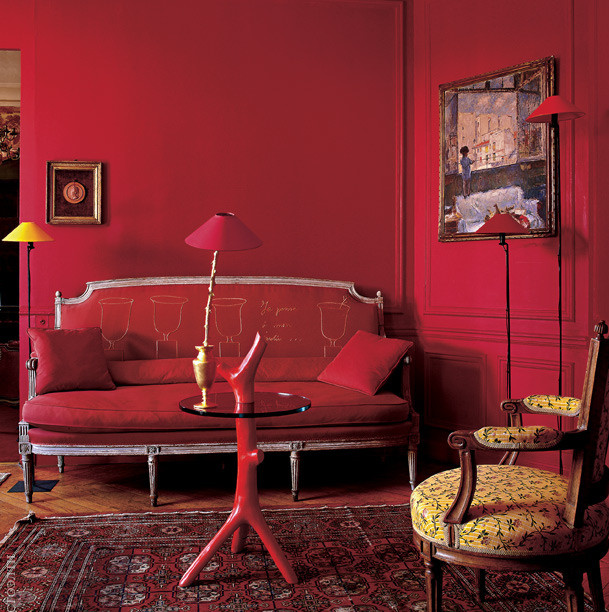



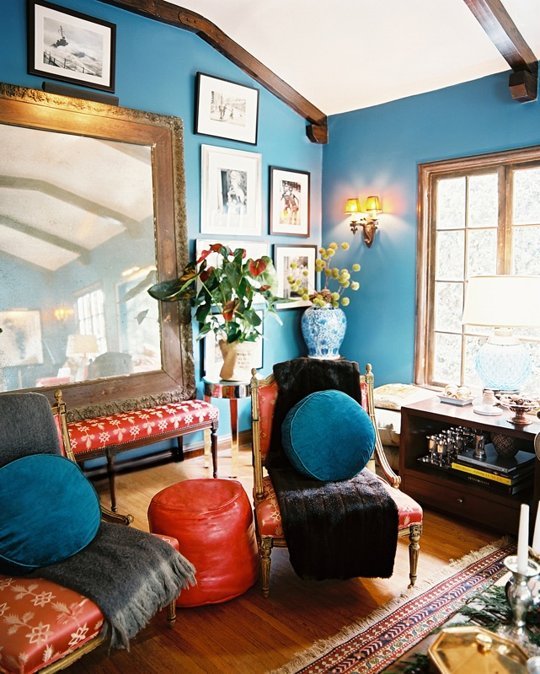 2. Red, mint green, turquoise., symbolizing another turn of the historical spiral. Mint shades were in fashion in Europe in the 20s, then returned in the 60s and 70s and are now back in the arena. For such a triad, as a rule, very delicate and pastel green and aquamarine shades with bright splashes of pure red are chosen - the color of Ferrari and the sweet life.
2. Red, mint green, turquoise., symbolizing another turn of the historical spiral. Mint shades were in fashion in Europe in the 20s, then returned in the 60s and 70s and are now back in the arena. For such a triad, as a rule, very delicate and pastel green and aquamarine shades with bright splashes of pure red are chosen - the color of Ferrari and the sweet life.



 3.Wine red, grass green and wood. Red and green are opposite colors on the color wheel, so their correct combination always gives a very impressive, truly spectacular result. Our opinion: - Precisely selected shades, coordinated through wooden surfaces, create an atmosphere of primary energy, the basic elements of life. For everything to work out, you do not need to mix these colors in equal proportions: one should dominate, and the second - to create light, precise accents.
3.Wine red, grass green and wood. Red and green are opposite colors on the color wheel, so their correct combination always gives a very impressive, truly spectacular result. Our opinion: - Precisely selected shades, coordinated through wooden surfaces, create an atmosphere of primary energy, the basic elements of life. For everything to work out, you do not need to mix these colors in equal proportions: one should dominate, and the second - to create light, precise accents.



 4. Red, blue, yellow.Child psychologists believe that these three colors in their pure form are the best solution for the development of preschoolers, so these colors are often used in children's rooms. In a softer, more muted form, the trio of primary colors will look great in any room. If you look closely, it is almost always present there.
4. Red, blue, yellow.Child psychologists believe that these three colors in their pure form are the best solution for the development of preschoolers, so these colors are often used in children's rooms. In a softer, more muted form, the trio of primary colors will look great in any room. If you look closely, it is almost always present there.


 5. Red, black and silver.Red looks great with grey – all together or in pairs, they will go together either way. If you are looking for a striking, yet classic and elegant combination – this is your option. White, clean medium grey and silver metals help to soften the harshness of a black and red interior.
5. Red, black and silver.Red looks great with grey – all together or in pairs, they will go together either way. If you are looking for a striking, yet classic and elegant combination – this is your option. White, clean medium grey and silver metals help to soften the harshness of a black and red interior.



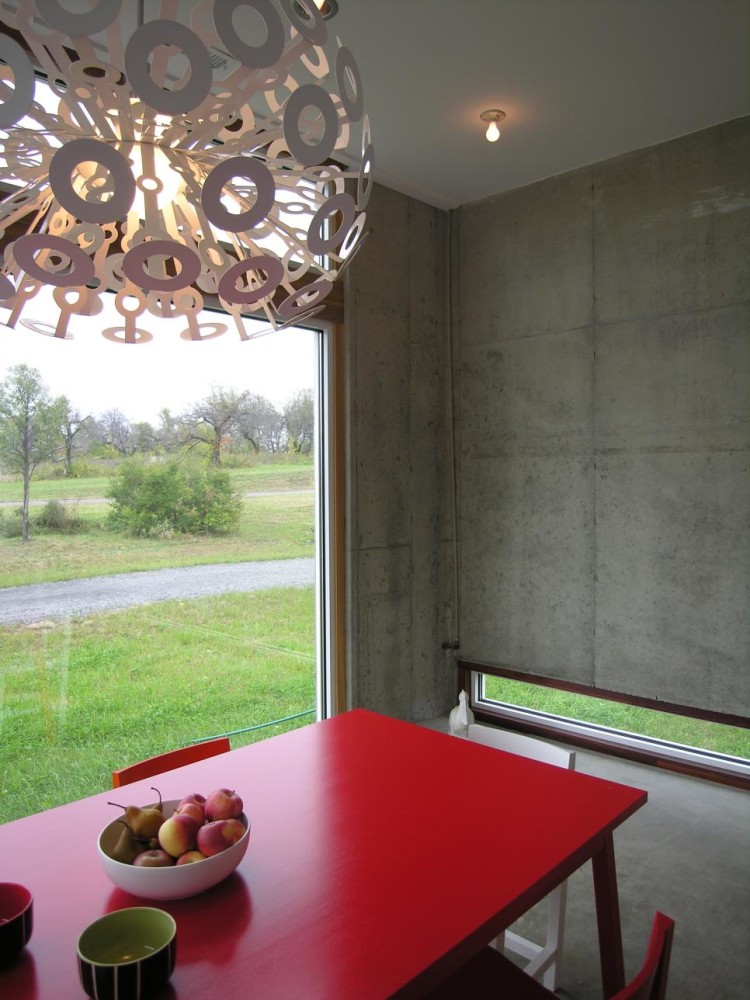 6. Red and neutral shades.Red goes well with pastel neutrals, both warm and cool. A striking example is the so-called “Alpine” palette: deep pink-brown, warm gray, rich red, charcoal and burgundy. In practice, these are light walls, rich brown floors and dark beams on the ceiling, textiles with bright traditional embroidery. In modern chalets, a red wall or a red chair.
6. Red and neutral shades.Red goes well with pastel neutrals, both warm and cool. A striking example is the so-called “Alpine” palette: deep pink-brown, warm gray, rich red, charcoal and burgundy. In practice, these are light walls, rich brown floors and dark beams on the ceiling, textiles with bright traditional embroidery. In modern chalets, a red wall or a red chair.



 7. Red in ethnic interiors.A colorful reddish carpet, striped rugs, Moroccan patterns or terracotta clinker: red is an indispensable tool in creating a modern interior with ethnic features. In such cases, the presence of red is a must-have item on the program. Our opinion: - In order not to overdo it with red patterns, add them gradually and, to begin with, choose “shabby”, slightly faded objects and colors. Among other things, they will help you bring an “antique” note to the interior.
7. Red in ethnic interiors.A colorful reddish carpet, striped rugs, Moroccan patterns or terracotta clinker: red is an indispensable tool in creating a modern interior with ethnic features. In such cases, the presence of red is a must-have item on the program. Our opinion: - In order not to overdo it with red patterns, add them gradually and, to begin with, choose “shabby”, slightly faded objects and colors. Among other things, they will help you bring an “antique” note to the interior.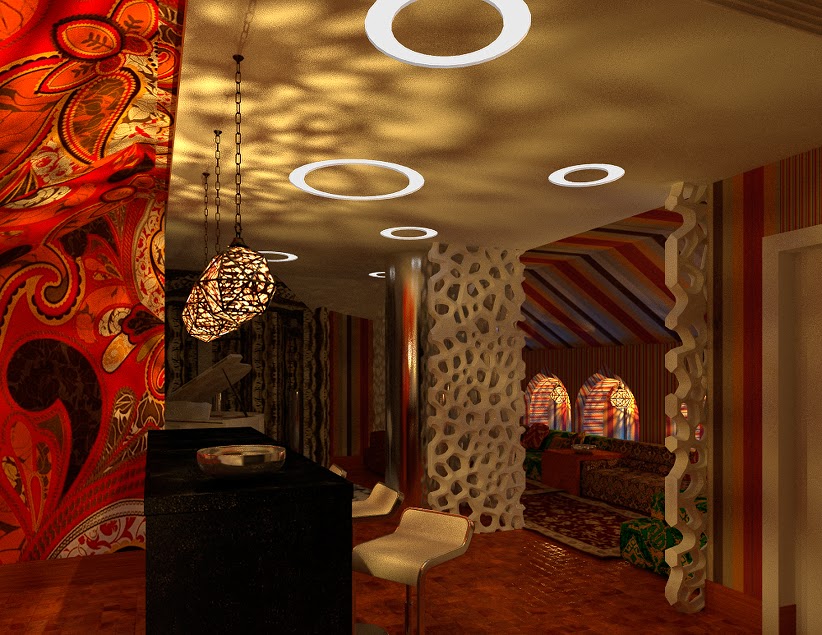 The interior was created by Ilona Boleysits
The interior was created by Ilona Boleysits The interior was created by Ilona Boleysits
The interior was created by Ilona Boleysits




